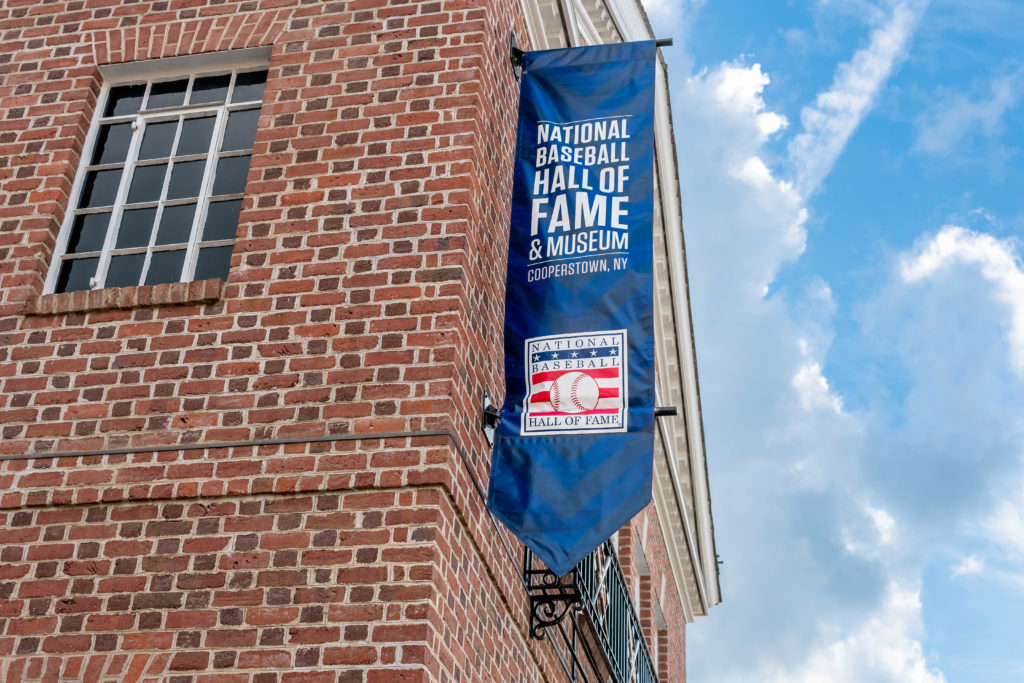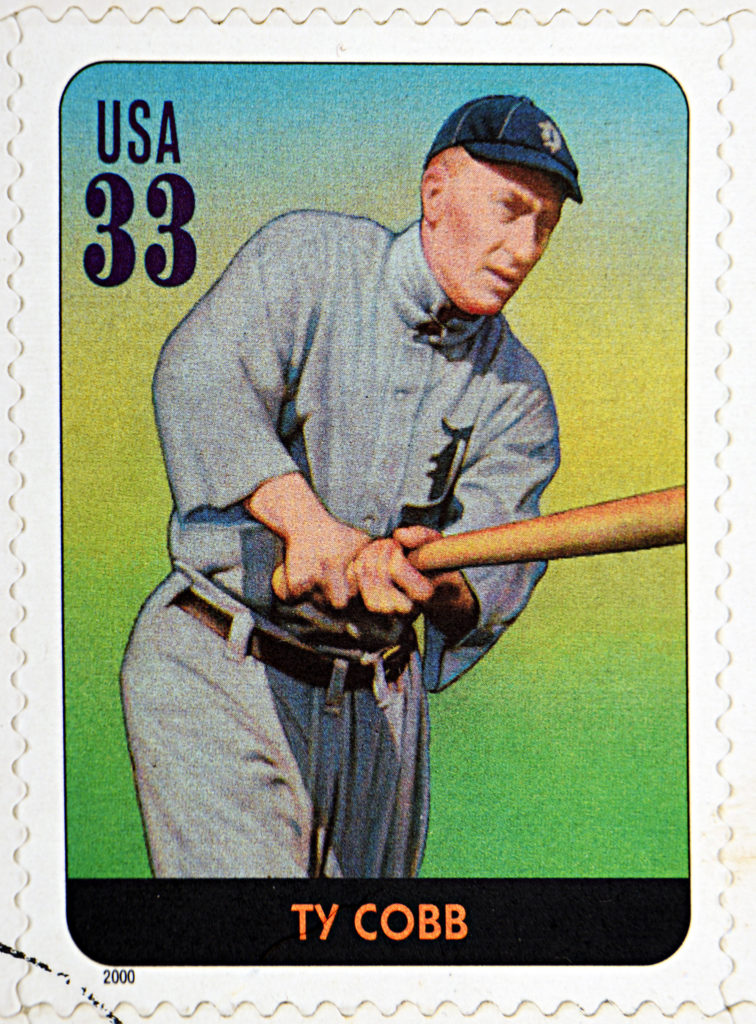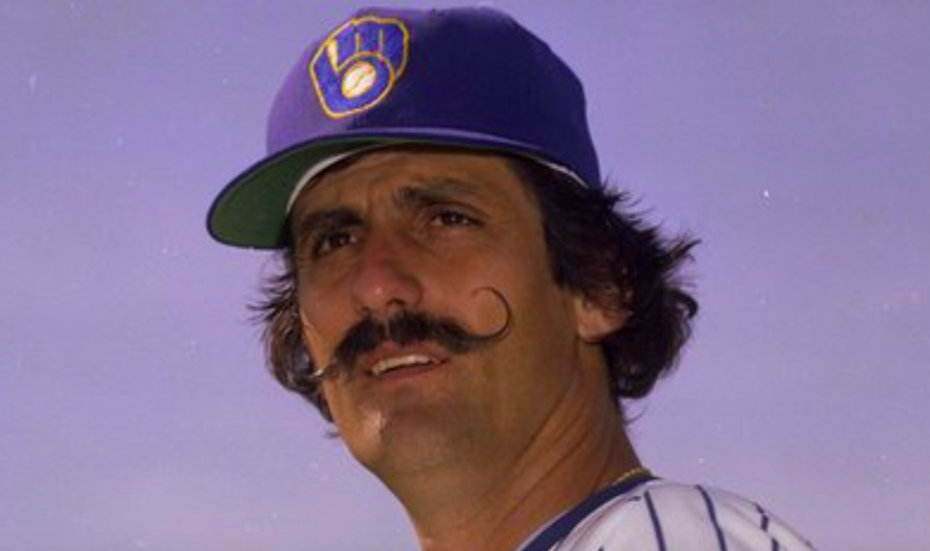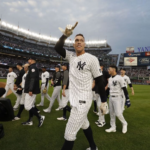You already know baseball season is in full swing and there’s future Hall of Famers scattered throughout the league, seeing them play before your very eyes, you’re able to see how they may eventually get the nod into baseball’s prestigious club.
If you’re a fan of the game, you heard of Miguel ‘Miggy’ Cabrera‘s recent 500th home run, an incredible feat. You know of Albert Pujols, Mike Trout, Shohei Ohtani, Justin Verlander, Max Scherzer, Clayton Kershaw, guys that will probably all be shoo-in Hall of Famers.
For those guys that are already in the Hall of Fame, it took years of hard work, putting in that time even maybe in the minor leagues, working their way up to the major leagues and continuing to work on their craft.
RELATED: The 20 Best Free Throw Shooters Ever
It goes without saying that everyone is unique. Including the journeys to get to the Hall of Fame. Every Hall of Fame story has its unique quality to it, this is just a list of 25 of them.
The sole fact they got into the Hall of Fame is incredible. The unique-ness factor just may be that you may haven’t heard about ’em as often as other ‘mainstream’ or ‘popular’ Hall of Famers, they played an integral role in the history of the sport, or have an interesting story.
So, grab your popcorn or Cracker Jack’s and we’ll take you out to the ballgame.
Shout out to the Baseball Hall of Fame for their list of Hall of Famers, which helped in compiling this list.
20 Of The Most Unique MLB Hall of Famers
20 – Al Barlick
Honestly, I didn’t even know umpires were in the Hall of Fame until now. So yeah, that’s cool. And Barlick is one of them. Check this out:
“Al Barlick’s rise to becoming one of baseball’s most revered umpires began in a coal mine in Springfield, Ill. In 1935, Barlick was helping his father in Springfield’s Peabody mine when a friend asked if he could fill in as an umpire for the local municipal league games. Five years later, Barlick debuted behind the plate in a doubleheader at Shibe Park, becoming one of the youngest umpires in major league history at age 25.”
National Baseball Hall of Fame: ‘Al Barlick’
19 – Grover Cleveland ‘Pete’ Alexander
This just sounds like a traditional baseball name. Grover Cleveland stepped up to the mound and delivered strike after strike.
“Using a wide variety of breaking pitches, deceptive speed and pinpoint control, Alexander soon found himself being compared to the top pitchers of his era. He averaged 27 wins per season during his seven years in Philadelphia from 1911-17, including one three-year span in which he won 31, 33 and 30.”
National Baseball Hall of Fame: ‘Pete Alexander’
18 – Rogers Hornsby
The name sounds like a classic movie within itself. And when it comes to movies and more, when you set the rules, making a unique set of standards to live by to be great at your craft, no one can blame you. If what’s unique works for you, then that’s what’s up. And Hornsby was no exception.
“The man who John McGraw called ‘a better hitter than Babe Ruth’ lived by his own rules, which included not drinking, smoking or attending movie theaters (so as not to strain his eyes).”
And you also just have to hear this story. Taking the farm system in baseball literally. Gotta’ love it.
“…manager Miller Huggins of the Cardinals told him at the close of the campaign: ‘I think, son, that you should be farmed out.’ The modern farm system was in its infancy in 1915 and Hornsby did not understand Huggins’ statement. He thought the manager meant that he should work on a farm to build up his physique. So, he went to work on a farm that winter and built himself up to 165 pounds.”
The National Baseball Hall of Fame: ‘Rogers Hornsby’
17 – Hugh Ambrose ‘Hughie’ Jennings
Ivy League student, lawyer, baseball manager, baseball Hall of Famer. Yeah, that’s not a bad resume. And also apparently boosting team morale as well with his attitude, that makes one unique baseball player.
“After the 1899 season, in which he played for the pennant-winning Brooklyn Superbas, Jennings went to Cornell Law School and began his managerial career with the university baseball team while also completing his studies. He left campus before finishing his degree in the 1904 season to manage the Eastern League’s Orioles, and was hired as the manager of the Detroit Tigers in 1907. He later passed the bar and enjoyed a long career practicing law. Jennings led the Tigers to three consecutive pennants in his first three seasons with the team and stayed with them until 1920. He compiled 1,131 wins in his 14 years as Detroit’s manager. The Detroit manager became known for yelling ‘Ee-yah!’ from the coaching box, as a form of encouragement for his players. It became his nickname, and fans would yell the word whenever he came on the field.”
National Baseball Hall of Fame: ‘Hughie Jennings’
16 – Effa Manley
Have to include a woman on this list. When you were a female among multiple men in the Hall of Fame, that’s unique, that’s an accomplishment, that’s incredible. Shout out to Effa Manley.
Effa Manley’s name was fitting for how she was able to become a Baseball Hall of Famer, blazing trails as a female in a game where, as the National Baseball Hall of Fame put it, “(a)s a businesswoman in a primarily man’s world, Effa Manley wanted to be a winner. Though the only woman among an industry of male owners, Manley got her wish in 1946, when the Newark Eagles, owned by her and her husband Abe, won the Negro League World Series, defeating the Kansas City Monarchs. Her career is a testament to her commitment to baseball and civil rights – and to her vision and dedication to creating respect for Negro Leagues baseball.”
15 – Charles James ‘Chick’ Hafey
It was the glasses. When you dominate the game wearing those spectacles, you gotta’ become a spectacle on this list.
“Hampered by poor eyesight and severe sinus problems, Charles James “Chick” Hafey played just 1,283 games but still managed to amass 1,466 hits and a career batting average of .317. Hafey won one batting title and was named to the inaugural All-Star Game, where he collected the first ever hit in All-Star Game history. Hafey was one of the first products of (Branch) Rickey’s farm system, arriving in St. Louis as a rookie in 1924. He was a part of the 1926 Cardinals team that won the World Series, but was limited after suffering several beanings that season. It is believed his health problems were a result of the beanings, and he would become the most prominent player of his era to wear eye glasses. Hafey continued to wear glasses throughout his career.”
National Baseball Hall of Fame: ‘Chick Hafey’
14 – Ulysses Franklin Grant
Shout out to Ulysses Franklin Grant. In a messed up time where there was even more discrimination and racism in the country, including in baseball, Grant reportedly stayed strong and didn’t stoop himself to the racist levels of the utmost wrong done to him:
“Grant, like other African-American players including George Stovey and Fleetwood Walker, faced discrimination on and off the field, from teammates and opponents. He would wear improvised wooden shin guards at second base to protect himself from opponents’ spikes. He was thrown at by pitchers repeatedly, and on several occasions, his own teammates threatened to strike if he continued to play – and refused to pose for team portraits if he was included. However, Grant continued to lead his team in hitting, batting .346 in 1888.”
National Baseball Hall of Fame: ‘Frank Grant’
Boom. Just like that, he let his actions speak. Wooden shin guards and all, he didn’t let the haters get to him that season but would just find a way to overcome the adversity. And Grant would become one of the best baseball players to ever play the game.
“Hall of Famer Sol White, a player, manager, and writer during the early years of black baseball, said: ‘In those days, Frank Grant was the baseball marvel. His playing was a revelation to his fellow teammates, as well as the spectators. In hitting he ranked with the best and his fielding bordered on the impossible. Grant was a born ballplayer.'”
National Baseball Hall of Fame: ‘Frank Grant’
13 – Richard Michael ‘Goose’ Gossage
These next two guys are unique because of their nicknames: ‘Goose’. What an epic name. And for Goose Gossage, it were his pitches that were also unique, reportedly being able to throw a heater of 100mph. Think about that. That’s a baseball flying towards you that’s going way over the speed limit. And you have to try and hit that thing.
“Gossage could be an intimidating presence on the mound, standing 6-foot-3 inches with a penetrating scowl. But of all his attributes, it was his overpowering fastball, which could reach 100 miles per hour, which made him one of the top relief pitchers throughout the 1970s and ‘80s.”
National Baseball Hall of Fame: ‘Goose Gossage’
12 – Leon Allen ‘Goose’ Goslin
Per the National Baseball Hall of Fame: “‘For the country at large the eagle may remain the national bird, but for the National Capital the greatest bird that flies is the Goose,’ sportswriter W.O. McGeehan once wrote.”
That’s incredible. Just gotta’ let the goose fly!
“While he was a gifted slugger, Leon Allen Goslin’s outfield play included a penchant for flapping his arms as he tracked down fly balls, a task he had no small amount of difficulty with, as well as a general awkwardness about his mannerisms that earned him the title of ‘Goose.'”
National Baseball Hall of Fame: ‘Goose Goslin’
11 – Andrew Bishop ‘Rube’ Foster
Per the National Baseball Hall of Fame, “Rube Foster excelled on the diamond as a manager and as an executive, earning him the recognition as the ‘father of black baseball.’”
“In 1920, Foster set the wheels in motion to create the Negro National League, an association of black teams modeled after Major League Baseball. Foster was named president and treasurer. The first successful league for African-American players, the NNL flourished throughout the decade. Players’ salaries rose to an unprecedented level, teams traveled on Pullman coaches and players received regular bonuses. Foster not only administered the league but continued to serve as manager and owner of the American Giants.”
National Baseball Hall of Fame: ‘Rube Foster’
10 – James Thomas ‘Cool Papa’ Bell
When your name’s Cool Papa Bell, yeah you’re on this list. What a cool, literally, name.
“Cool Papa may well have been the fastest man ever to play the game of baseball. Certainly, the stories of his speed are the stuff of legend. ‘I remember one time I got five hits and stole five bases, but none of it was written down because they forgot to bring the scorebook to the game that day,’ Bell said.”
National Baseball Hall of Fame: ‘Cool Papa Bell’
9 – George Lee ‘Sparky’ Anderson
Another guy who gets in the list solely because of the name. Sparky. Sparky’s a legend in Detroit.
“Anderson led the Reds to the National League pennant in 1970 and produced another pennant for Cincinnati in 1972 – and the NL West title in 1973 – before the Reds won back-to-back World Series titles in 1975 and 1976. Anderson…hooked on with the Tigers midway through 1979. By 1984, Anderson had led Detroit into the World Series, where the Tigers defeated the Padres to cap a season in which the team began the year with a record of 35-5.”
National Baseball Hall of Fame: ‘Sparky Anderson’
8 – Elmer Flick
Elmber Flick was unique in a sense that, according to the National Baseball Hall of Fame, “Flick was elected to the Baseball Hall of Fame in 1963. At 87 years old at the time of his election, Flick became the oldest living player to earn enshrinement in Cooperstown.”
“In 1891, a 15-year old Elmer Flick went down to the train station to give his hometown semi-professional baseball team in Bedford, Ohio, a send-off. With the train ready to leave and only eight players present, someone asked the youngster to join them. Despite being barefoot, Flick jumped at the opportunity – and a Hall of Fame career began.”
National Baseball Hall of Fame: ‘Elmer Flick’
7 – Roland Glen ‘Rollie’ Fingers
It’s not only what he did with his fingers, throwing strike after strike in the MLB, it was the ‘stache that makes him unique, as well.
“Rollie Fingers had quite possibly the most famous mustache in baseball. But fans didn’t come to the ballpark to see just that. They came to see him close out games with his sinking fastball night after night.”
National Baseball Hall of Fame: ‘Rollie Fingers’
6 – Larry Doby
Yes, you have heard of Jackie Robinson and how he was pivotal in breaking the color barrier of baseball. A guy you may not have heard of who was also instrumental in being one of the first African Americans in the MLB: Larry Doby.
“He was the second African-American to play in the National League or American League – but the first in the AL – in the modern era after Jackie Robinson. He was the second Black manager of an AL or NL club after Frank Robinson.”
National Baseball Hall of Fame: ‘Larry Doby’
5 – William Arthur ‘Candy’ Cummings

This guy reportedly could’ve been the inventor of the curveball. And how it came about is truly…unique.
“…he is often cited with the invention of a new pitch called the “curveball” that made him one of the most influential pitchers in baseball history. It began on a Brooklyn beach one day in 1863, when the 14-year-old Cummings was throwing sea shells into the Atlantic Ocean. Cummings and his friends found that they could easily make flat, circular shells curve in the air.”
4 – Roberto Clemente
Roberto Clemente went down as one of the best baseball players to ever play the game. And how he got to that point was incredible.
“Clemente worked to find his stride during the next five seasons (after the 1954 season), battling injuries and a language barrier in a country where he was a citizen but had no home. But in 1960, the Pirates and Clemente came of age as the limber right fielder batted .312 with a team-high 94 RBI to lead the Pirates to the World Series. In the Fall Classic, Clemente hit .310 to help the Pirates defeat the Yankees in seven games. During the next seven years, Clemente won four National League batting titles, the 1966 NL Most Valuable Player Award and began a string of 12 straight Gold Glove Award seasons in right field.”
National Baseball Hall of Fame: ‘Roberto Clemente’
3 – Ty Cobb

Another legend in Detroit, “Ty Cobb may have been the best all-around baseball player that ever lived” according to the National Baseball Hall of Fame.
“He spent 22 seasons in Detroit and another two in Philadelphia before retiring as the holder of 43 major league regular season career records, including the all-time batting average mark of .366.”
National Baseball Hall of Fame: ‘Ty Cobb’
2 – Oscar Charleston
Shout out to Oscar Charleston’s story. From being a batboy of the team he eventually would play with and excel to serving our great country, Charleston was a true veteran…of the military and the game of baseball.
“As a youth, Oscar Charleston was a batboy for his hometown Indianapolis ABC’s. At the age of 15, he enlisted in the military and was sent to the (Philippines), where he played baseball with the 24th Negro Infantry. In 1915, still a teenager, Charleston returned to Indianapolis and quickly became a star center fielder for the ABC’s.”
1 – Albert Benjamin ‘Happy’ Chandler
Have to end this list the right way, in a happy mood of course. So, fittingly, Happy takes the cake for the top spot on this list. And it’s all in a name because after reading some of his Hall of Fame bio, he was instrumental in helping aid in breaking the color barrier in the game. And that goes beyond just what happens on a baseball diamond but helps contribute in impacting society for the better.
“Chandler served as Commissioner for Jackie Robinson‘s historic breaking of the color barrier with the Brooklyn Dodgers in 1947. Later that season, Chandler threatened to suspend Philadelphia Phillies manager Ben Chapman for his racially insensitive taunts toward Robinson…’Some of the things he did for Jackie Robinson, Roy Campanella and [myself] when he was commissioner of baseball – those are the kinds of things we never forget,’ said Dodgers pitcher Don Newcombe, who added that Chandler had cared for black players in baseball ‘when it wasn’t fashionable.’”
National Baseball Hall of Fame: ‘Happy Chandler’
There you have it, folks! A list of 20 of the most unique MLB Hall of Famers. Hope you enjoyed the list and learned something new. I certainly did when compiling it, learning more about some of the great players, owners, executives, and even an umpire in the game who all played their part in one way or another in helping shape the game to be eventually where it is today.
Who was your favorite on this list? Let me know in the comments!
As I mentioned at the start, everyone has a unique story, including you! Go live your unique life and have a unique Hall of Fame-type day today.
Contents
- 1 20 Of The Most Unique MLB Hall of Famers
- 2 20 – Al Barlick
- 3 19 – Grover Cleveland ‘Pete’ Alexander
- 4 18 – Rogers Hornsby
- 5 17 – Hugh Ambrose ‘Hughie’ Jennings
- 6 16 – Effa Manley
- 7 15 – Charles James ‘Chick’ Hafey
- 8 14 – Ulysses Franklin Grant
- 9 13 – Richard Michael ‘Goose’ Gossage
- 10 12 – Leon Allen ‘Goose’ Goslin
- 11 11 – Andrew Bishop ‘Rube’ Foster
- 12 10 – James Thomas ‘Cool Papa’ Bell
- 13 9 – George Lee ‘Sparky’ Anderson
- 14 8 – Elmer Flick
- 15 7 – Roland Glen ‘Rollie’ Fingers
- 16 6 – Larry Doby
- 17 5 – William Arthur ‘Candy’ Cummings
- 18 4 – Roberto Clemente
- 19 3 – Ty Cobb
- 20 2 – Oscar Charleston
- 21 1 – Albert Benjamin ‘Happy’ Chandler
At The Buzzer, or ATB is the place for those who love sports, life, family, community, and so much more. We are far from the run-of-the-mill 24/7 sports news websites. We not only bring you what’s happening in the world of sports in terms of trades and breaking news, but we also bring you the news that goes on behind the scenes, like big life moments, and so much more. So take a minute and read one of our articles, we promise you won't regret it.






